Budapest's Seasonal Hungarian Food: A Culinary Calendar
The food scene in Budapest changes completely with the seasons. We've noticed how the city's restaurants and markets follow the natural cycle of Hungarian farming, and it's pretty amazing to see. From those first tender asparagus shoots in spring to the heavy, warming stews when winter hits, everything revolves around what's fresh and available.
We always tell people that eating seasonally in Budapest isn't just some trendy thing. It's how Hungarian cooking has worked for hundreds of years. When you get a bowl of that ice-cold sour cherry soup in July or dig into stuffed cabbage when it's freezing outside, you're eating ingredients when they taste their absolute best. Local chefs and market vendors know exactly when each ingredient hits its peak, and they've gotten really good at making the most of nature's timing.
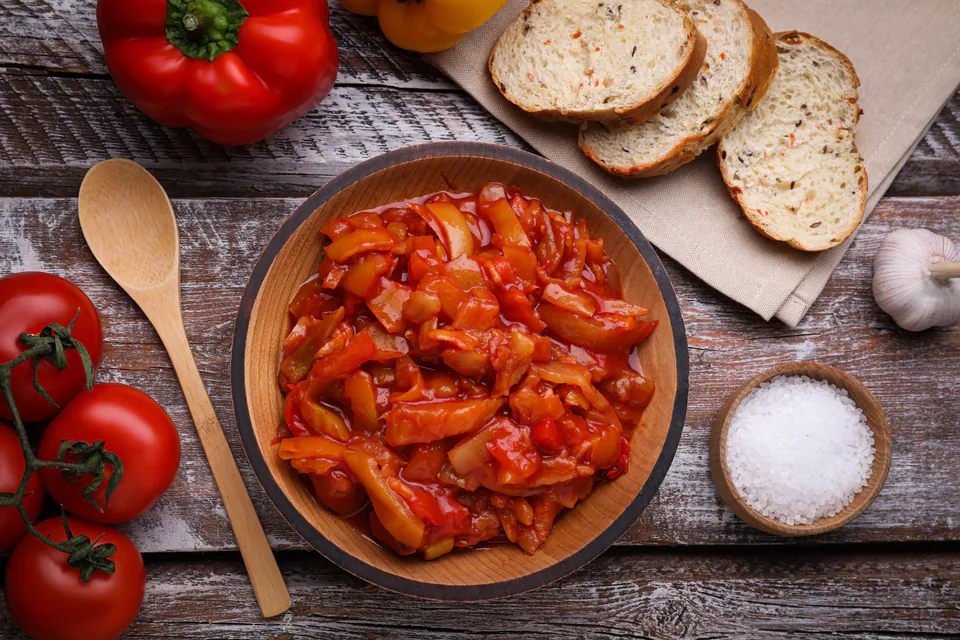
How Hungarian Seasonal Cooking Actually Works
Hungarian food is built on pretty simple ideas: good meat, lots of paprika, and whatever vegetables are growing right now. We've eaten our way through countless meals here, and the best ones always use what's in season. It's not complicated, but it works incredibly well.
Paprika is the one thing that stays constant all year round. We've seen it in everything from heavy winter goulash to light summer vegetable dishes. This bright red spice doesn't just make food taste good, it actually changes how seasonal ingredients get prepared. Whether it's adding richness to a winter stew or giving a gentle kick to fresh summer vegetables, paprika connects everything together.
One thing that really impressed us about Hungarian cooking is how they preserve the harvest. Pickled vegetables like cabbage and cucumbers mean you can taste summer and autumn flavors even when it's snowing outside. We learned this shows how connected Hungarian food is to the farming calendar. Each season's harvest gets celebrated, preserved, and worked into dishes that last all year.
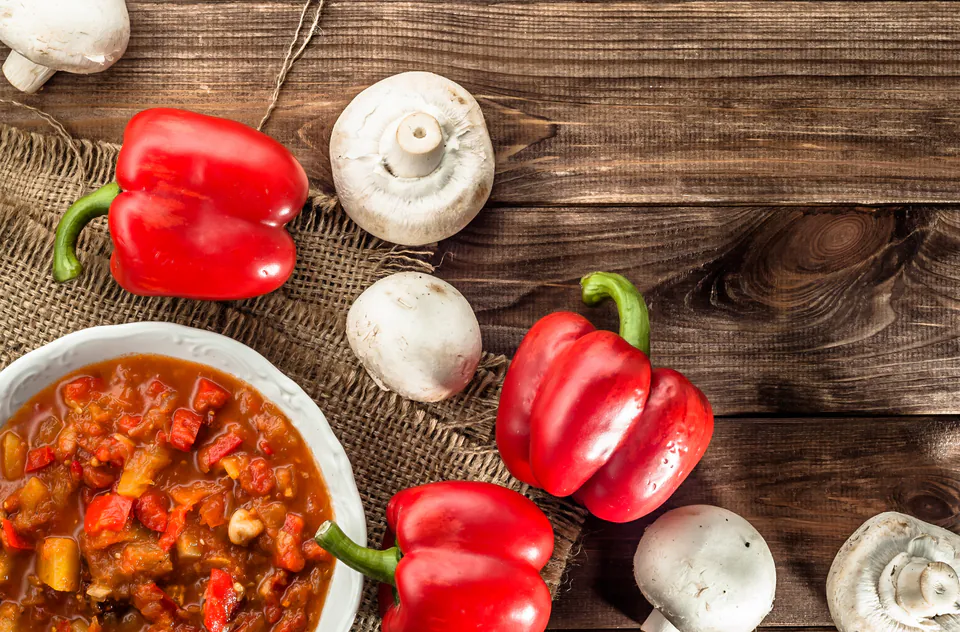
Spring: When Everything Starts Fresh Again
When winter finally ends, Budapest's markets and restaurants come alive with fresh, bright flavors. We always get excited about this time of year because it feels like the whole food scene is waking up after months of heavy winter dishes.
Asparagus becomes the star ingredient during spring. We've had some incredible asparagus soups that are smooth and creamy, showcasing that delicate, earthy taste. Local chefs are really careful to keep the asparagus's natural sweetness while adding just enough Hungarian herbs and spices. Fresh peas show up too, often cooked with chicken in light stews that feel comforting but not heavy like winter food.
Fresh herbs like dill and parsley start appearing everywhere during spring. These add bright, fresh flavors to traditional dishes like stuffed peppers. We noticed how these herbs make familiar Hungarian dishes taste lighter and more vibrant. The combination of fresh herbs with early spring vegetables creates food that feels both traditional and refreshingly new.
Spring Seasonal Ingredients and Dishes
| Spring Ingredients | Traditional Preparations |
|---|---|
| Asparagus | Creamy asparagus soup, grilled asparagus with herbs |
| Fresh Peas | Chicken with peas stew, pea and herb salads |
| Strawberries | Traditional strawberry shortcake, fresh berry desserts |
| Rhubarb | Rhubarb pie, rhubarb crumble with local honey |
| Fresh Dill | Cucumber salad, herb-infused stuffed peppers |
| Parsley | Stuffed peppers, fresh herb sauces |
If you like desserts, spring brings strawberries and rhubarb. Hungarian pastry chefs are really good at using these early fruits in classic desserts. We've had strawberry shortcakes that balance the fruit's sweetness perfectly with rich, buttery pastry. Rhubarb shows up in traditional pies and crumbles, often with local honey that makes the fruit's tartness taste even better.
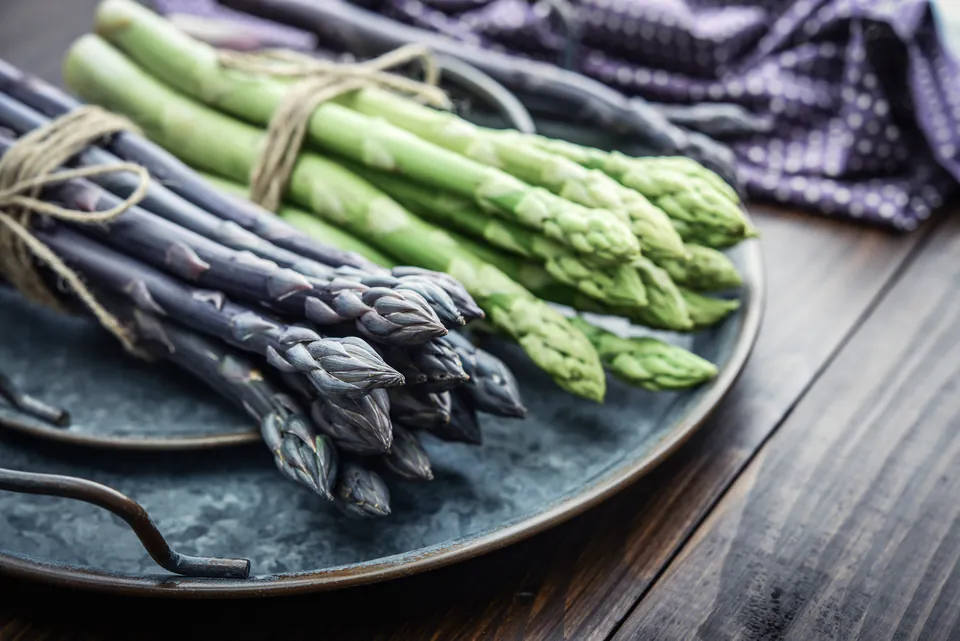
Summer: When the Markets Overflow
Summer completely changes Budapest's food scene. The markets get packed with ripe, juicy fruits and vegetables that are perfect for hot, sunny weather. We love this season because there's so much variety in fresh produce, and both traditional and modern restaurants get really creative.
The best thing about Hungarian summer food is hideg meggyleves, which is chilled sour cherry soup. This dish surprised us the first time we tried it. It's this amazing combination of sweet and tart flavors, served ice cold as either a starter or light dessert. It really shows off Hungary's famous sour cherries when they're at their absolute best, and it's perfect for hot summer days.
Honey-sweet melons, juicy cantaloupes, and different types of peaches are at their peak during summer. These fruits end up in everything from simple fruit salads to fancy cold fruit soups, which is another Hungarian thing that's perfect for cooling down while enjoying the season's natural sweetness.
Lecsó is summer cooking at its best. It's this hearty vegetable dish made with sweet peppers, onions, and tomatoes. You can eat it by itself if you're vegetarian, or add sausage and eggs to make it more filling. We love how simple it is because it lets the natural flavors of peak-season vegetables really shine through.
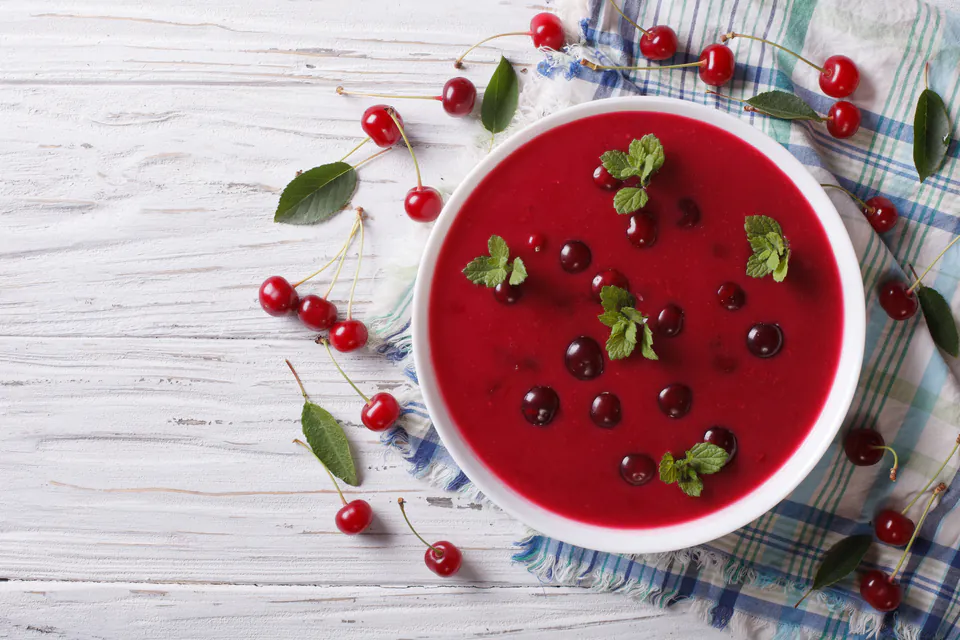
Kovászos uborka are naturally fermented pickled cucumbers made with garlic and dill. We've seen lots of Hungarian families make these during summer. They're tangy and full of probiotics, and they're perfect for pairing with heavier dishes while giving you something refreshing during hot weather.
Summer Seasonal Highlights
| Summer Ingredients | Popular Preparations |
|---|---|
| Sour Cherries | Cold sour cherry soup (hideg meggyleves) |
| Sweet Peppers | Lecsó (vegetable ragout) |
| Tomatoes | Fresh salads, lecsó, gazpacho variations |
| Cucumbers | Kovászos uborka (fermented pickles) |
| Melons & Peaches | Cold fruit soups, fresh fruit salads |
| Fresh Herbs | Herb-infused dishes, fresh garnishes |
Autumn: Harvest Time Gets Serious
Autumn brings the most variety and abundance to Budapest's food scene. The markets fill up with rich colors and earthy smells that show off the harvest season. We think this time of year really shows how Hungarian cooking can turn simple ingredients into deeply satisfying, warming dishes that get you ready for winter.
Pumpkins become really important during autumn. They show up in everything from creamy, comforting soups to simple roasted dishes that bring out their natural sweetness. Hungarian cooks are great at balancing pumpkin's mild flavor with warming spices, creating dishes that capture what autumn is all about while keeping that hearty character Hungarian food is known for.
Root vegetables like potatoes and carrots become the base for classic autumn stews, especially goulash. These vegetables taste their best after the growing season, and they give Hungarian stews that satisfying foundation. Their natural sweetness gets stronger through slow cooking, which creates those deep, complex flavors that make Hungarian comfort food so good.

The fruit selection during autumn is pretty impressive: grapes, pears, apples, plums, figs, chestnuts, and walnuts. These give ingredients for both savory and sweet dishes. Apples and pears often end up in traditional strudels, while walnuts get used in both desserts and savory dishes like walnut noodles, which is this unique Hungarian thing.
Game meats like duck and goose become popular during autumn. They're often roasted until crispy or made into rich, flavorful pâtés. These proteins work really well with autumn's root vegetables and fruits, creating meals that celebrate the season's abundance while giving you the heartier nutrition you need when it starts getting cold.
Autumn Seasonal Specialties
| Category | Key Ingredients | Traditional Dishes |
|---|---|---|
| Vegetables | Pumpkin, potatoes, carrots | Pumpkin soup, goulash, roasted vegetables |
| Fruits | Apples, pears, grapes, plums | Apple strudel, pear desserts, fruit preserves |
| Nuts | Chestnuts, walnuts | Roasted chestnuts, walnut noodles, nut cakes |
| Game Meats | Duck, goose | Roasted duck, goose liver pâté, game stews |
Winter: All About Comfort and Staying Warm
When winter hits Budapest with snow and cold, the food scene turns to hearty, soul-warming dishes that actually keep you warm and make you feel good. We think this season shows Hungarian cooking at its most traditional and satisfying, with recipes that families have been making for generations to get through harsh winter months.
Gulyás (goulash) and Jókai bean soup are winter cooking at its best. These are rich, warming soups and stews that combine good proteins with seasonal vegetables and that essential paprika warmth. We love how these dishes need slow cooking that fills homes and restaurants with amazing smells, creating this atmosphere of comfort and hospitality that really defines Hungarian winter dining.
Chicken paprikash with its creamy paprika sauce and töltött káposzta (stuffed cabbage) are main courses that show up a lot on winter menus. We find the stuffed cabbage particularly interesting because it shows the Hungarian tradition of preserving summer's cabbage harvest for winter eating. It connects the seasons through careful preservation and preparation.
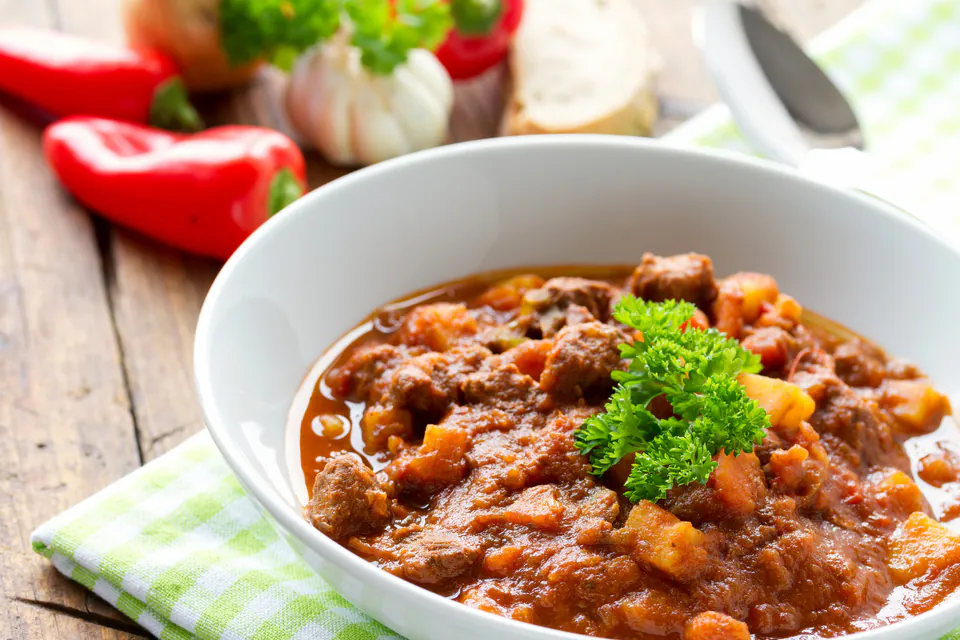
Street food becomes really special during winter. Sült kolbász (roasted sausages) are particularly appealing at those festive winter markets. The combination of cold air and the warming spices in Hungarian sausages creates a perfect winter eating experience, especially when you pair it with a steaming mug of forralt bor (mulled wine).
Traditional Christmas pastries like bejgli are rich rolls filled with poppy seed or walnut paste that extend winter's culinary celebrations. These pastries need skill and patience to make, and they often become family traditions that connect generations through shared recipes and techniques.
We love the simple pleasure of roasted chestnuts from street vendors. The warm, nutty smell of roasting chestnuts fills the cold air, giving both food and comfort to people dealing with winter's chill.

The Hungarian Dishes You Can Get All Year
While seasonal changes make Budapest's food scene exciting, certain classic Hungarian dishes stay available all year round. They often get subtle changes based on what fresh seasonal ingredients are available. These dishes form the backbone of Hungarian cooking, giving consistent flavors that define the national food identity.
Gulyás stays Hungary's most famous dish no matter what season it is, though winter versions might have heartier root vegetables while summer preparations could include lighter seasonal additions. The dish's basic character (tender beef, vegetables, and that essential paprika) stays the same while allowing for seasonal flexibility.
Chicken paprikash also adapts to seasonal availability. Spring versions have fresh herbs, summer preparations include seasonal vegetables, and winter versions focus on maximum comfort through rich, creamy sauces. The dish's core identity doesn't change while embracing seasonal improvements.
Lángos, the beloved deep-fried flatbread usually topped with sour cream and cheese, satisfies people year-round, though toppings might change seasonally. Summer versions might have fresh herbs or seasonal vegetables, while winter preparations focus on heartier, more warming combinations.

Where We Go for Seasonal Hungarian Food
Budapest has tons of places for experiencing authentic seasonal Hungarian food, from traditional markets where you can see ingredients at their peak to restaurants that specialize in seasonal menu changes.
Stand Étterem, which has two Michelin stars, shows the modern approach to seasonal Hungarian cooking. We're impressed by their commitment to quality and seasonal ingredients, which shows in their changing menu that adapts to showcase the freshest available produce while maintaining sophisticated takes on traditional Hungarian flavors.
TATI Farm to Table takes seasonal commitment even further by getting ingredients directly from Hungarian smallholders. This approach ensures maximum freshness while supporting local agriculture, creating dishes that truly capture each season's peak flavors.
The Great Market Hall gives the most complete seasonal shopping experience. It has huge arrays of seasonal produce alongside traditional Hungarian specialties. We've found that the market vendors understand seasonal rhythms and often give advice on preparation methods and seasonal combinations.
Szimpla Sunday Farmer's Market, held inside a ruin bar, gives direct connections to local producers. This market specializes in seasonal specialties sold directly by the farmers who grow them, ensuring maximum freshness and authenticity.

Food Events and Festivals Throughout the Year
Budapest's food calendar includes several events that celebrate seasonal ingredients and traditional preparations. The Gourmet Festival, usually held in May, is a big event where top chefs often highlight seasonal produce in creative dishes. This festival shows how traditional Hungarian ingredients can be elevated through modern techniques while keeping their essential character.
Easter Markets at Vörösmarty Square celebrate spring's arrival with traditional Hungarian Easter treats that often use seasonal ingredients. These markets give opportunities to experience how Hungarian cooking integrates seasonal celebrations with traditional foods.
Various harvest festivals throughout autumn celebrate the season's abundance, though many happen in wine regions outside Budapest. However, the Budapest Wine Festival in September brings harvest celebrations to the capital, with wine tastings and traditional harvest processions that showcase autumn's agricultural bounty.
Winter brings Christmas markets that work as major food events, serving traditional Hungarian winter specialties alongside festive treats. These markets give authentic experiences of Hungarian winter food culture, from warming mulled wine to traditional pastries and roasted nuts.